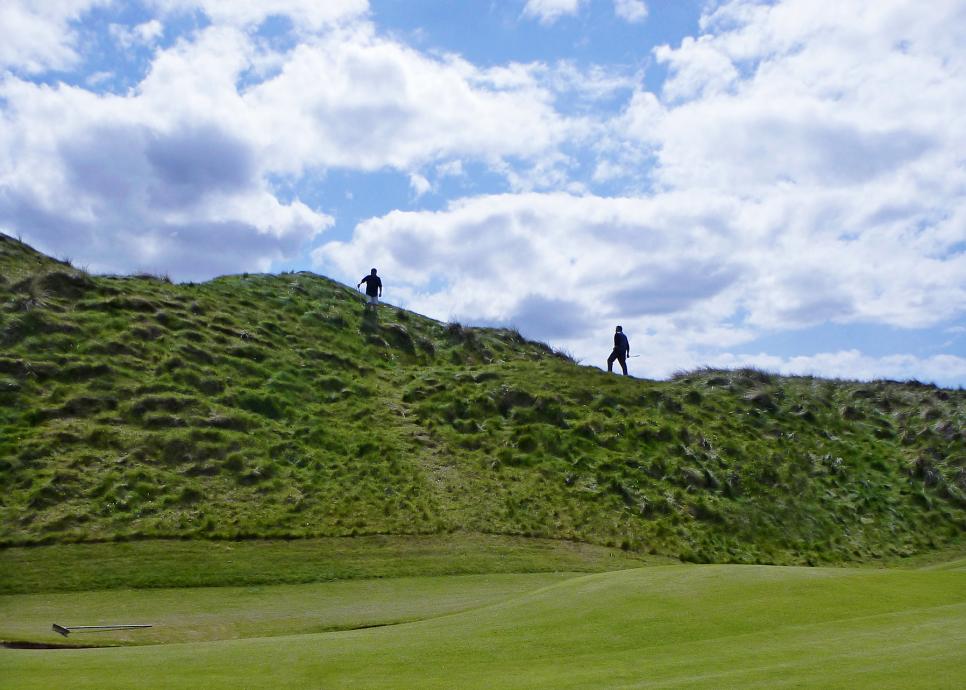In early May, 11 friends and I spent a week playing golf in western Ireland. On the plane to Shannon, I read Boomerang, Michael Lewis' 2011 book about the global financial crisis. Lewis explains how the Irish, beginning in the 1990s, went from being some of the poorest people in Europe to being some of the richest people in the world, and then went back to being poor again—in effect, by lending themselves billions to buy rope to hang themselves with.
As soon as our plane had landed, I switched my brain to golf. But lingering signs of economic folly were impossible to overlook. As we approached Lahinch from Ballybunion, on the third day of our trip, we drove through a blighted landscape of bubble-era "holiday homes," some of which looked less like real houses than like oversize Monopoly game pieces. The Irish built thousands of these things during the boom years—known as the Celtic Tiger—and if you remember what the countryside looked like before they popped into existence you can't help but feel sad.
Not all of Ireland's irrational exuberance was Irish. Half an hour earlier, we'd driven past Doonbeg Golf Club, which was founded in 2002 by the owners of the Kiawah Island Club (a private club unrelated to the Kiawah Island Golf Resort).
The people there hired Greg Norman to design their course, and they built a vast, Downton Abbey-style gray-stone clubhouse and "lodge." They went under a couple of years ago, in part because they couldn't honor guarantees they'd made to people who had bought their wildly overpriced apartments and cottages. The golf course and lodge are now owned by a famous American, who bought the property out of receivership and renamed it Trump International Golf Links Doonbeg.
We saw another artifact of the Celtic Tiger as we approached Enniscrone Golf Club, our final stop. A few yards from Enniscrone's first tee is a complex of buildings that, from a distance, looks as though it might be a hospital, a school or a minimum-security prison. In fact, it's a starkly unattractive hotel flanked by a starkly unattractive "holiday village." The company that developed the village went out of business in 2009; the hotel was bought out of receivership earlier this year, for a fraction of what it cost to build.
Even though its entrance makes my heart sink, Enniscrone is one of my favorite courses anywhere. It's now dealing not only with the aftermath of the Celtic Tiger but with the same economic and demographic challenges faced by golf courses in other countries, including the United States. There just aren't as many golfers as there used to be, or seemed to be. Enniscrone has responded, in part, by offering an innovative discount to people who are taking up the game or haven't belonged to a club in at least five years: just €266 (roughly $300) for the first year—a remarkable bargain for a great links course that stays open year-round. (The regular annual fee, €700, is a heck of a bargain, too.) A former club captain told me that membership numbers are still slightly soft but that total rounds are up: a hopeful sign.
We saw additional hopeful signs an hour or so to the east, at Strandhill Golf Club, the only course on our itinerary I hadn't played before. We'd added it at the recommendation of Kevin Markham, an Irish writer whose numerous accomplishments include playing every 18-hole course in the country. "I love Strandhill," he told me recently. "I always tell people to go there." The club offers a plausible model for economically sustainable golf anywhere: The green fees are affordable, the course is challenging for good players without being overwhelming for beginners, and even though we visited on a weekday the place was bustling with local residents. I saw a very young girl receiving a putting lesson from her grandfather, and on the 15th hole we stepped aside so that a women's two-ball match could play through. (Strandhill was in the process of defeating Donegal.) In the golf shop, later, I bought a shirt for my wife, even though her game is ice hockey, because I knew she'd like the motto: "Friendship in Sport." And I bought myself a shirt, too.
